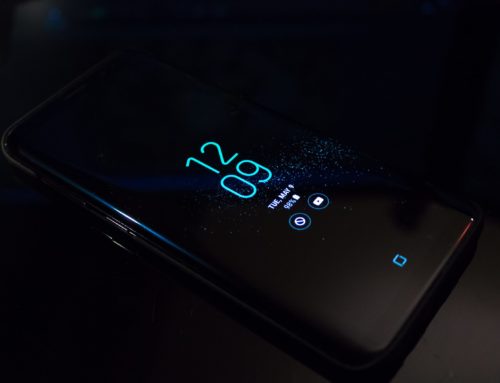Breaking news! In this ever-expanding digital realm, where communication platforms reign supreme, battles for supremacy often unfold. And right in the heart of this rivalry lies the age-old feud between WhatsApp and iMessage. Talk about two heavyweight contenders in the world of instant messaging! But while some envision a harmonious union between these giants, a closer examination suggests that forcing WhatsApp and iMessage to work together may just be a doomed endeavor. Brace yourselves, folks; there’s more to this tale than meets the eye.
Table of Contents
- 1. The Unbreakable Barrier: Why Merging WhatsApp and iMessage is a Futile Pursuit
- 2. WhatsApp and iMessage: An Incompatibility Written in Code
- 3. Breaking the Unbreakable: Why Forcing WhatsApp and iMessage to Coexist is a Fruitless Endeavor
- 4. The Clash of Titans: Unveiling the Insurmountable Challenges of Bridging WhatsApp and iMessage
- 5. WhatsApp + iMessage: A Love Story Doomed to Tragedy
- 6. Unlocking Pandora’s Box: The Futility of Merging WhatsApp and iMessage
- 7. When Worlds Collide: The Inevitable Failure of Combining WhatsApp and iMessage
- 8. An Impossible Fusion: Debunking the Myth of a Unified WhatsApp and iMessage Experience
- Q&A
1. The Unbreakable Barrier: Why Merging WhatsApp and iMessage is a Futile Pursuit
In a world obsessed with connectivity and convenience, the thought of merging two giants like WhatsApp and iMessage seems like a no-brainer. But deep within the intricate web of technology lies an unbreakable barrier that renders this pursuit futile. Here, we delve into the reasons why these two messaging platforms will forever remain separate entities.
1. **Platform Dependencies**: WhatsApp, being primarily a mobile-based application available for both Android and iOS, relies heavily on the smartphone ecosystem. On the other hand, iMessage has a strong affiliation with Apple’s proprietary software and hardware, limiting its availability solely to Apple users. Attempting to merge these platforms would require circumventing these fundamental dependencies, which poses a monumental challenge.
2. **Privacy Policies and Encryption**: WhatsApp prides itself on providing end-to-end encryption for every conversation, ensuring utmost privacy and security for its users. Conversely, iMessage adheres to Apple’s strict privacy policies but does not provide end-to-end encryption for messages between iCloud users. The stark difference in their privacy approaches makes merging them an intricate task, as they would have to compromise on their respective policies.
2. WhatsApp and iMessage: An Incompatibility Written in Code
When it comes to messaging apps, WhatsApp and iMessage stand out as two of the most popular choices. Both offer their own unique features and have millions of dedicated users. However, there is a glaring issue that seems to divide them – an incompatibility that appears to be written in the very code they are built upon.
One of the main reasons for this incompatibility is that WhatsApp and iMessage are built using different protocols. WhatsApp uses the Signal Protocol, which is known for its high level of end-to-end encryption and secure messaging. On the other hand, iMessage relies on the Apple Push Notification Service and its own encryption techniques. These differences in protocols make it impossible for WhatsApp and iMessage to communicate with each other seamlessly.
- The incompatibility between WhatsApp and iMessage means that users on one platform cannot send messages to those on the other platform.
- Group messaging, a feature that is widely used and appreciated, is also not possible when it comes to cross-platform communication between WhatsApp and iMessage.
- Since WhatsApp and iMessage store messages differently, it becomes challenging for one platform to access and display messages from the other platform.
It seems that this incompatibility between two of the most popular messaging apps might never be resolved, as it is deeply embedded in the underlying code. Until a revolutionary breakthrough in communication protocols is made, WhatsApp and iMessage users will continue to experience this unfortunate divide.
3. Breaking the Unbreakable: Why Forcing WhatsApp and iMessage to Coexist is a Fruitless Endeavor
Encryption as a Pillar of Security:
Attempting to force the coexistence of WhatsApp and iMessage may seem like a worthy pursuit, but it is an endeavor destined for failure. Both messaging platforms boast their own unique advantages and to merge them would be like trying to combine the uncombinable.
One major stumbling block is the issue of encryption. WhatsApp and iMessage are renowned for their end-to-end encryption, providing users with a sense of security and privacy unparalleled by other messaging services. However, the algorithms used by the two platforms differ significantly, making it nearly impossible to seamlessly integrate the two. Encryption is a fundamental aspect of these platforms, and any attempt to dilute or alter it in the pursuit of coexistence would compromise the very essence of their secure nature.
The Clash of App Ecosystems:
WhatsApp and iMessage not only differ in terms of security features but also in their rich ecosystems. WhatsApp is deeply integrated with Facebook, allowing users to easily access and share content from the social media giant. On the other hand, iMessage is tightly woven into the fabric of Apple’s ecosystem, enabling seamless communication and synchronization between Apple devices.
These distinct ecosystems, each catered to by their respective platforms, have evolved to suit the needs and preferences of their dedicated users. Forcing the coexistence of WhatsApp and iMessage means either compromising on the user experience or attempting to create a hybrid ecosystem that would inevitably result in a disjointed and convoluted mess, offering neither the seamless integration of Apple’s services nor the convenience of Facebook’s vast social connectivity.
4. The Clash of Titans: Unveiling the Insurmountable Challenges of Bridging WhatsApp and iMessage
When it comes to the world of messaging apps, two giants stand out: WhatsApp and iMessage. These platforms have become integral parts of our lives, enabling us to communicate with friends and family effortlessly. However, the task of bridging these two titans together is no easy feat.
Unveiling the insurmountable challenges of integrating WhatsApp and iMessage is like peering into a complex labyrinth. Here are some of the hurdles that developers and tech enthusiasts have encountered along the way:
- Different OS environments: WhatsApp runs on Android and iOS, while iMessage is exclusive to Apple’s ecosystem. This fundamental difference in operating systems poses a significant obstacle in creating a seamless merger between the two platforms.
- End-to-end encryption: Both WhatsApp and iMessage prioritize user privacy and security, employing robust end-to-end encryption protocols. Merging these two messaging giants while maintaining the same level of encryption is a challenge that requires extensive expertise.
Finding a common ground between WhatsApp and iMessage is akin to bridging two continents separated by a vast ocean. These challenges are a testament to the complexity of integrating two behemoths of the messaging world. However, in the ever-evolving landscape of technology, anything is possible. Perhaps one day, we will witness the fusion of WhatsApp and iMessage, uniting two giants and revolutionizing the way we communicate.
5. WhatsApp + iMessage: A Love Story Doomed to Tragedy
WhatsApp and iMessage, two of the most popular messaging platforms, have long been the darlings of communication in the digital world. Each possesses its own unique set of features and loyal user base, making them the ultimate choice for staying connected with friends, family, and colleagues. However, despite their undeniable charm and incredible convenience, the story of WhatsApp and iMessage is one of star-crossed lovers that seems destined for heartbreak.
Firstly, one cannot ignore the bitter truth that these two giants simply refuse to collaborate. While WhatsApp opens its arms to countless Android users, iMessage remains an exclusive privilege of the iOS world. This fundamental divide in accessibility creates a rift in their love affair, forcing users to make an inevitably painful choice. Do they stick with the elegant and seamless iMessage, resigning themselves to the walled garden of Apple? Or do they embrace the unrivaled popularity and cross-platform compatibility offered by WhatsApp, but forever yearn for the iMessage experience?
- Two powerhouses, yet divided by operating systems.
- Endless debates over superiority plague online forums and dinner conversations.
- Neither willing to compromise for the sake of their users.
Secondly, the tragedy unfolds with the constant battle of features and innovations. Each platform constantly strives to outdo the other, resulting in a never-ending cycle of envy. WhatsApp introduces convenient voice messaging, leaving iMessage users feeling left out in the cold. In retaliation, iMessage unveils its groundbreaking effects and Animojis, causing WhatsApp devotees to cast longing glances towards the iOS camp.
Alas, the tale remains one of unrequited love, where WhatsApp and iMessage continue their separate journeys, forever destined to be two ships passing in the night. As users grapple with this tragic decision, it is impossible not to yearn for a world where these star-crossed lovers could finally unite, setting aside their differences and delivering an all-encompassing messaging experience that would be the envy of the digital realm. Perhaps, someday, this love story will find its happy ending.
- A never-ending quest for superiority results in a tug-of-war between features.
- Users caught in the crossfire suffer from a perpetual case of FOMO (Fear of Missing Out).
- A world of infinite possibilities exists if only these two could find common ground.
6. Unlocking Pandora’s Box: The Futility of Merging WhatsApp and iMessage
As technology continues to evolve at an unprecedented pace, the idea of merging two messaging giants like WhatsApp and iMessage may seem like a match made in heaven. However, delving deeper into the intricacies of this merger unveils a Pandora’s Box that may prove to be futile in the grand scheme of things.
The illusion of unity: While the idea of having a single messaging platform for both iOS and Android users might appear seamless, the reality is far more complex. Just as Pandora opened the box filled with chaos, merging WhatsApp and iMessage could potentially unleash a floodgate of challenges that may outweigh the benefits. Some key considerations include:
- Privacy concerns: Both platforms have different approaches to handling user data, and reconciling these differences could lead to compromising user privacy.
- Technical compatibility: WhatsApp and iMessage are built on distinct architectures, making it arduous to integrate the two seamlessly without compromising the app’s performance and stability.
- User experience: Each platform boasts unique features and functionalities that users have grown accustomed to. Harmonizing these features in a merged platform could lead to a loss of identity and user dissatisfaction.
The battle of giants: WhatsApp and iMessage are not just competitors, but also representatives of rival tech giants. Merging these two ecosystems would require a level of collaboration and compromise rarely seen in the tech world. Facebook, the parent company of WhatsApp, and Apple, the force behind iMessage, have long held divergent philosophies when it comes to data privacy, encryption, and user control. Attempting to join these giants together may result in each losing its unique identity and potentially alienating their loyal user base.
7. When Worlds Collide: The Inevitable Failure of Combining WhatsApp and iMessage
The dream of combining WhatsApp and iMessage, two of the most popular messaging platforms in the world, has been a topic of speculation for years. While this might seem like a match made in heaven, a closer look reveals a collision of incompatible worlds that ultimately leads to an inevitable failure.
1. Different Encryption Protocols:
One of the major hurdles in combining WhatsApp and iMessage lies in their distinct encryption protocols. WhatsApp employs end-to-end encryption, ensuring the privacy and security of its users’ messages. On the other hand, iMessage relies on a more closed system with encryption controlled by Apple. Attempting to merge these two approaches could compromise the integrity of both platforms and pose a significant challenge in safeguarding user data.
2. Platform Inconsistencies:
Another obstacle arises from the fundamental differences between WhatsApp and iMessage platforms. While WhatsApp is available on various operating systems, iMessage remains exclusive to Apple devices. Merging these platforms would inevitably restrict the user base and undermine the simplicity and convenience both platforms currently offer. Additionally, the integration of infrastructures and functionalities may prove to be a complex and costly endeavor, creating further difficulties in achieving a seamless user experience.
8. An Impossible Fusion: Debunking the Myth of a Unified WhatsApp and iMessage Experience
WhatsApp and iMessage. Two giants in the world of messaging apps, each boasting a massive following and an extensive list of features. For years, users have fantasized about the possibility of these two behemoths joining forces, creating an ultimate messaging experience that seamlessly combines the best of both worlds. However, it’s time to debunk this myth once and for all – a unified WhatsApp and iMessage experience is nothing short of an impossible fusion.
1. Platform Differences: WhatsApp and iMessage are built on fundamentally different platforms. While iMessage is exclusively available on Apple devices, WhatsApp caters to both Android and iOS users. The structural differences and technical requirements of each platform make it incredibly challenging to merge the two apps seamlessly. From a development standpoint, this would entail an extensive overhaul of code, potentially leading to compatibility issues and performance problems.
2. Privacy and Security Concerns: Both WhatsApp and iMessage have unique approaches to privacy and security. While WhatsApp utilizes end-to-end encryption, guaranteeing users’ privacy, iMessage also prioritizes user security by encrypting messages in transit. Merging these two systems would require reconciling their distinct encryption methods, which could potentially compromise one or both apps’ security measures. The challenge of striking a balance between privacy and security is an immense one, making a seamless fusion unlikely.
As we wrap up our exploration of the elusive dream of merging two giants – WhatsApp and iMessage – it becomes evident that the pursuit of such a harmonious union is a path paved with insurmountable challenges. While our minds may revel in the possibilities of seamless cross-platform communication, reality presents an array of stumbling blocks that thwart any hope of success.
In the spiraling mists of innovation, it is only natural for us to yearn for connectivity without borders. The idea of seamlessly bridging the divide between WhatsApp and iMessage seems tantalizingly magical, transcending the limitations imposed by rival software giants. But alas, dear reader, as we delve deeper into the complexities of these platforms, we find ourselves shackled by the weight of technical constraints and corporate agendas.
With impenetrable walls surrounding the realms of WhatsApp and iMessage, their respective creators have crafted distinct ecosystems. Each system bears the hallmarks of their architects’ unique visions and strategic imperatives. Attempting to force these two colossi to dance in unison is akin to challenging the natural order, seeking to overcome not only differences in architecture but philosophical disparities that lie at the core of their existence.
Furthermore, the relentless pursuit of interconnectivity should not overshadow the virtues of diversity. Merging WhatsApp and iMessage would effectively homogenize two distinct entities, eroding the richness and vibrancy that comes from technological divergence. It is precisely this diversity that fuels our inexhaustible capacity for innovation and propels us forward, continually pushing the boundaries of what is possible.
Though the pursuit of unity between WhatsApp and iMessage carries an undeniable allure, let us not mistake allure for attainability. While dreams of unrestricted cross-platform communication swirl in our collective imagination, it is important to recognize the inherent obstacles that persist. Instead, we must embrace the existence of multiple communication platforms, acknowledging and cherishing their uniqueness, rather than clumsily attempting to meld them together.
In this ever-expanding digital landscape, let us marvel at the wonders of WhatsApp and iMessage from afar, appreciating their individual merits as they stand. Cherishing their distinctive features, we can revel in the extraordinary options that they each provide, creating a tapestry of communication choices that cater to our diverse needs.
So, dear reader, as we bid adieu to the grand vision of a unified world of messaging, let us not despair. Instead, let us relish the diversity that springs from the distinct ecosystems of WhatsApp and iMessage, for in doing so, we celebrate the richness and variety that define our interconnected digital lives.




Leave A Comment